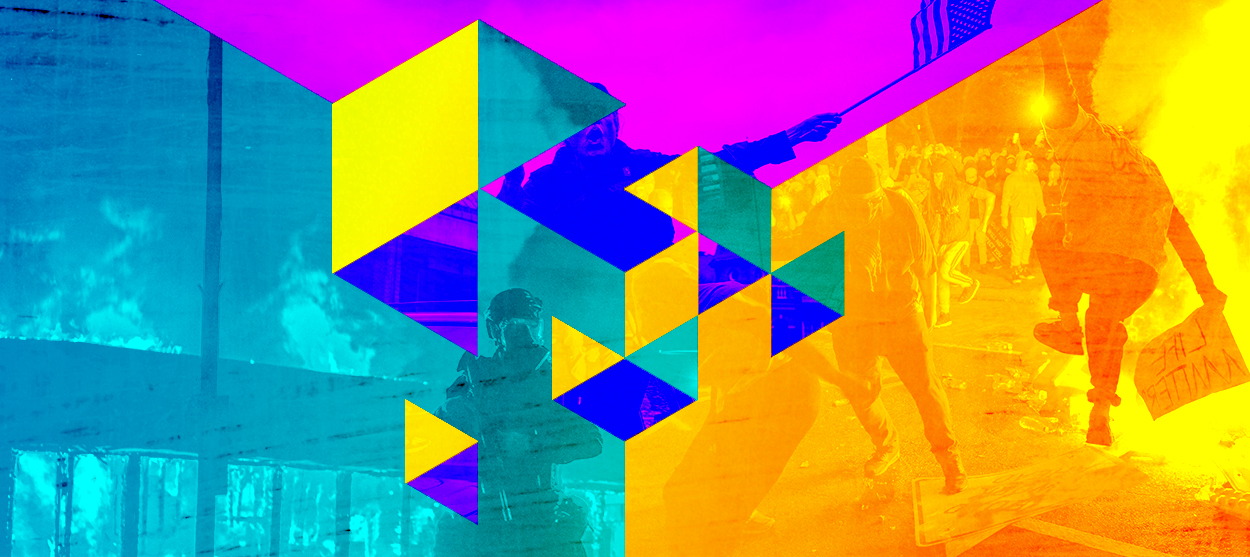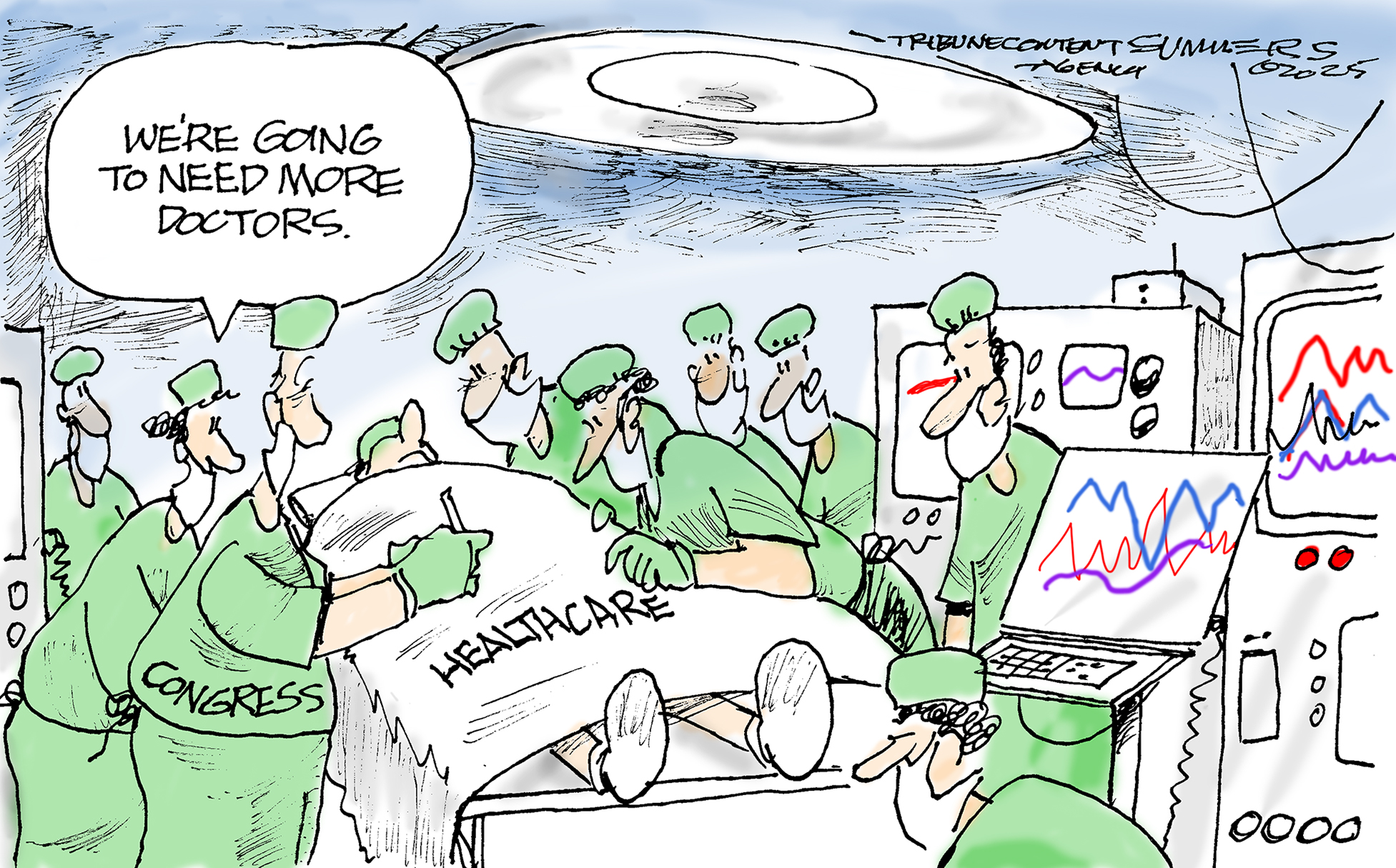You know what violence is
There's no need to redefine the term


Violence is a through line of this summer, and this week it ran through Kenosha, Wisconsin.
Protests have raged through the small, Midwest city since police shot Jacob Blake seven times in the back, paralyzing him. Demonstrations that were mostly or entirely peaceful during daylight have devolved into vandalism and arson at night, with dozens of businesses, apartments, and vehicles damaged, looted, or burned. Then, late Tuesday, two people were killed and a third wounded when they were shot, allegedly by a 17-year-old suspect who before the shooting said he was on hand, seemingly as a voluntary vigilante, to protect local businesses.
All this — the police shooting, the arson, the vigilante killings — is violence. It is not all the same degree of violence, but it is violence nonetheless. That may seem too obvious to state, but the nature of violence has come under dispute. Too many seem unwilling to acknowledge they know it when they see it — like CNN running a chyron describing Kenosha's unrest as "fiery but mostly peaceful," or Vice President Mike Pence decrying violence by looters but not by police, or Twitter critics angry that property damage would be called "violence" at all.
The Week
Escape your echo chamber. Get the facts behind the news, plus analysis from multiple perspectives.

Sign up for The Week's Free Newsletters
From our morning news briefing to a weekly Good News Newsletter, get the best of The Week delivered directly to your inbox.
From our morning news briefing to a weekly Good News Newsletter, get the best of The Week delivered directly to your inbox.
Standard definitions of violence have two consistent elements: use of physical force and intent to inflict harm. Eliminate the physical force and it may be more appropriate to speak of aggression, abuse, manipulation, exploitation, threat, malice, or coercion — all evils, but not identical to violence, which they only sometimes include. Eliminate the intent to harm and the act at hand may be an accident, an act of protective restraint (as when a medical worker uses force to control a delirious patient), or a mechanistic or natural force.
These two elements have deep roots in the etymology of violence. The word "comes from violare in classical Latin," explains Gandhian scholar Michael Nagler, who founded the Peace and Conflict Studies Program at U.C. Berkeley. "Violare means 'to bear in on with force' and in the classical period it came to mean 'injure, dishonor, outrage, violate.'" We use "violent" to describe weather events and animal predation, Nagler says, but these are metaphorical meanings, for "only humans can, properly speaking, be violent."
The boundaries of violence have also been scrutinized since antiquity. Christian peace traditions have long examined violence to understand what is and isn't pleasing to God. The African theologian Tertullian deemed imprisonment, torture, execution, warfare, and any "occupation of the sword" impermissibly violent. Early Quaker leaders testified they had "wronged no man's person or possessions," and thus "used no force nor violence against any man."
All this is to say the question of how to define violence isn't new. It has been asked for centuries and, frankly, answered well. We know violence when we see it.
A free daily email with the biggest news stories of the day – and the best features from TheWeek.com
We know, as those Quakers did, that it includes forcibly harming people and their possessions. There's nothing in the definition that limits the physical harm in question to human bodies, and destroying possessions can destroy lives, as anyone who lost their home, food, or livelihood in the Tulsa race massacre or a genocidal famine or under scorched-earth policy could tell you.
This runs contrary to the belief of growing number on the left, who, in the words of Current Affairs' Nathan J. Robinson, argue the "word 'violence' should be reserved for harm done to people," because to do otherwise would imply equivalence between people and property. But this redefinition is absurd. Of course, violence against a thing is not the same as violence against a human. But then, neither is punching someone the moral equivalent of beheading them. Violence has degrees. To admit this is not conflation.
We also know "violence" has never meant exclusively verbal attacks. Language can be intended to inflict harm. It can even incite or command or encourage violence. But language is not itself violence, nor is silence violence (as a crowd of demonstrators insisted in a viral video from Washington on Monday), no matter how nicely it rhymes. Silence in some circumstances may excuse or endorse or permit violence, and it doesn't diminish the gravity of such abuses to say silence is not violence itself. This distinction is the one truth of the otherwise lying nursery proverb: Sticks and stones may break your bones, and words will also hurt you — but they won't hurt you with physical force, and that means, however otherwise evil, they're not violence.
This should not trouble us. Applying the label of "violence" is hardly the only way to condemn intentional harm. We have lots of other words for this! But evidently it does trouble us. Or least it troubles that portion of the American left which has decided we ought to adjust the definition of violence to newly exclude property damage and include harmful silence or speech.
That's not to say the right always uses the word violence appropriately. President Trump has misused it by accusing Rep. Rashida Tlaib (D-Mich.) of "violence" for her policy views on Israel and Palestine. More commonly, as Pence demonstrated, the word is misused by omission in reference to law enforcement wings of the state: Pro-death penalty conservatives tend not to speak of executions as violence, though certainly they are. Euphemisms of "officer-involved shootings" or police "discharging their weapons and striking someone" avoid acknowledgement of state violence, too.
Violence is a constant this summer, so how we speak about is particularly urgent right now. Refusing to recognize violence does nothing to stop it. We can't pretend it away, whatever its source.
The mushrooming violence in Kenosha is what people mean when they say "violence begets violence": not that one act of violence deserves or justifies another, but that they often follow and attract each other, spreading organically, like rot, infestation, contagion. Denying or downplaying any of these violent deeds can only make that reproduction more difficult to halt.
Bonnie Kristian was a deputy editor and acting editor-in-chief of TheWeek.com. She is a columnist at Christianity Today and author of Untrustworthy: The Knowledge Crisis Breaking Our Brains, Polluting Our Politics, and Corrupting Christian Community (forthcoming 2022) and A Flexible Faith: Rethinking What It Means to Follow Jesus Today (2018). Her writing has also appeared at Time Magazine, CNN, USA Today, Newsweek, the Los Angeles Times, and The American Conservative, among other outlets.
-
 Political cartoons for December 13
Political cartoons for December 13Cartoons Saturday's political cartoons include saving healthcare, the affordability crisis, and more
-
 Farage’s £9m windfall: will it smooth his path to power?
Farage’s £9m windfall: will it smooth his path to power?In Depth The record donation has come amidst rumours of collaboration with the Conservatives and allegations of racism in Farage's school days
-
 The issue dividing Israel: ultra-Orthodox draft dodgers
The issue dividing Israel: ultra-Orthodox draft dodgersIn the Spotlight A new bill has solidified the community’s ‘draft evasion’ stance, with this issue becoming the country’s ‘greatest internal security threat’
-
 Has Zohran Mamdani shown the Democrats how to win again?
Has Zohran Mamdani shown the Democrats how to win again?Today’s Big Question New York City mayoral election touted as victory for left-wing populists but moderate centrist wins elsewhere present more complex path for Democratic Party
-
 Millions turn out for anti-Trump ‘No Kings’ rallies
Millions turn out for anti-Trump ‘No Kings’ ralliesSpeed Read An estimated 7 million people participated, 2 million more than at the first ‘No Kings’ protest in June
-
 Ghislaine Maxwell: angling for a Trump pardon
Ghislaine Maxwell: angling for a Trump pardonTalking Point Convicted sex trafficker's testimony could shed new light on president's links to Jeffrey Epstein
-
 The last words and final moments of 40 presidents
The last words and final moments of 40 presidentsThe Explainer Some are eloquent quotes worthy of the holders of the highest office in the nation, and others... aren't
-
 The JFK files: the truth at last?
The JFK files: the truth at last?In The Spotlight More than 64,000 previously classified documents relating the 1963 assassination of John F. Kennedy have been released by the Trump administration
-
 'Seriously, not literally': how should the world take Donald Trump?
'Seriously, not literally': how should the world take Donald Trump?Today's big question White House rhetoric and reality look likely to become increasingly blurred
-
 Will Trump's 'madman' strategy pay off?
Will Trump's 'madman' strategy pay off?Today's Big Question Incoming US president likes to seem unpredictable but, this time round, world leaders could be wise to his playbook
-
 Democrats vs. Republicans: who are US billionaires backing?
Democrats vs. Republicans: who are US billionaires backing?The Explainer Younger tech titans join 'boys' club throwing money and support' behind President Trump, while older plutocrats quietly rebuke new administration
